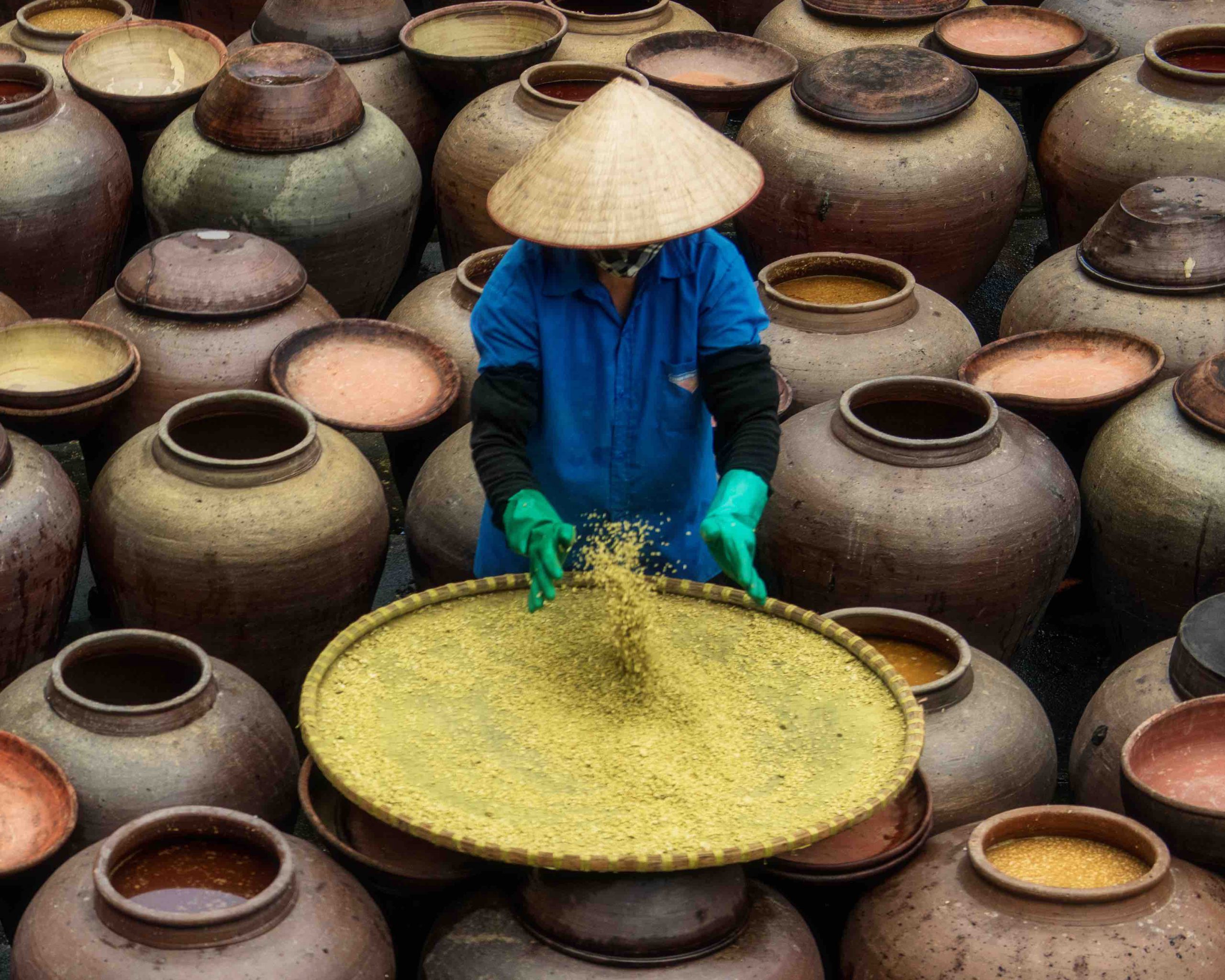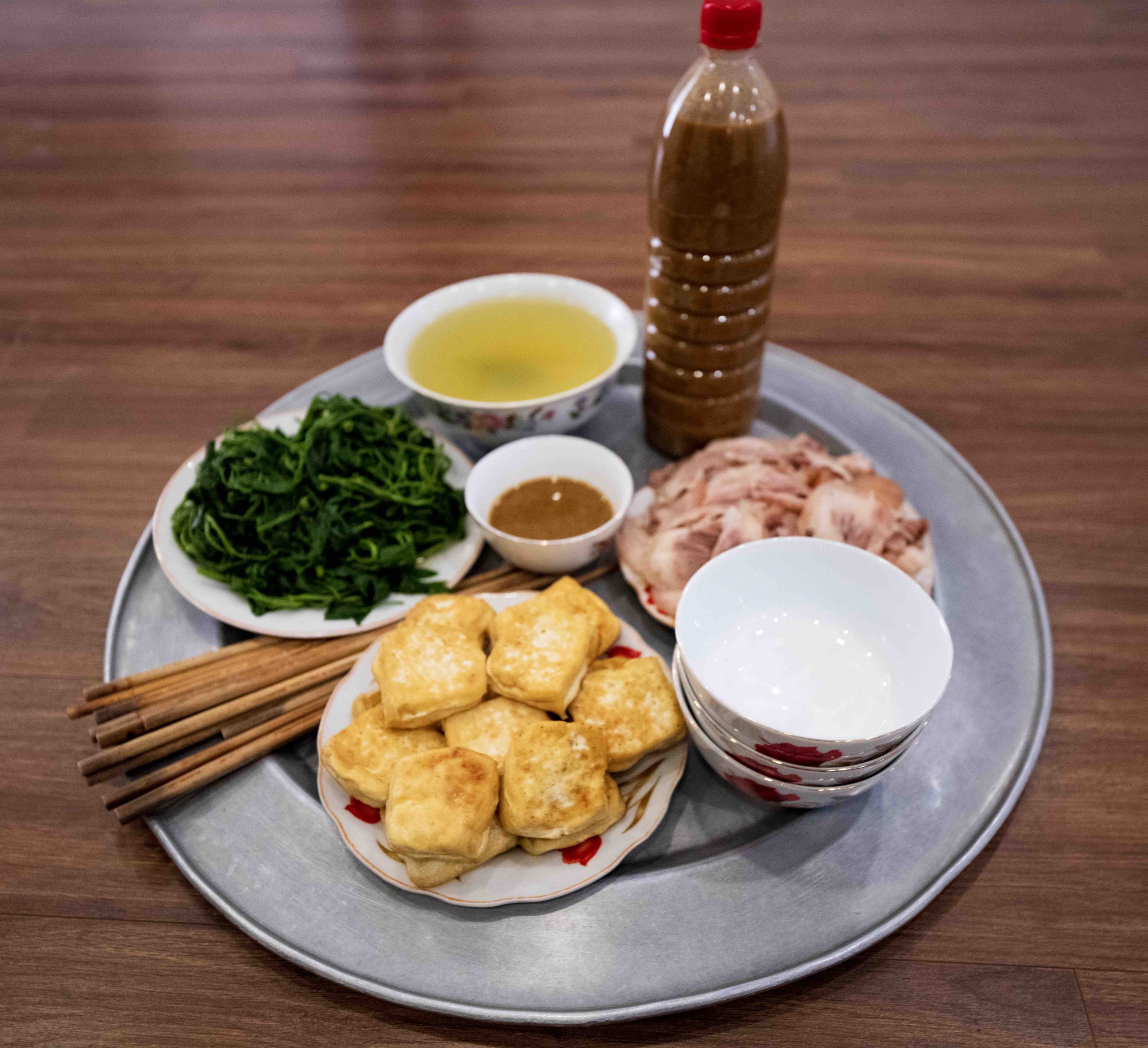By: Tran Hong Lieu
Photos: Tue Lam
In March, as the sun grows stronger, after festival days spent indulging in the heavy flavors of banh chung (square sticky rice cakes), fatty pork, and pickled onions, one suddenly craves lighter fare—like the cool, nutty taste of water spinach or the simplicity of boiled tofu dipped in Ban sauce.

Known for their discerning palates, Hanoians have a saying to praise delicacies from various regions: “La pickles, Lang eggplants, Bang spring rolls, Ban sauce, Van Van fish sauce, Dam Set perch”. Ban sauce is a specialty of Ban village, now part of Ban Yen Nhan ward in My Hao town, Hung Yen province. This humble dipping sauce has been a daily staple of Ban villagers since as early as the 12th or 13th century, crafted with care by the diligent hands of local women.
During the sunny days and dewy nights of March, as well as cultivating rice, the villagers intercrop various crops like corn, sweet potatoes, cassava, peanuts, and beans, including soybeans. Making full use of their crops—soybeans, fragrant glutinous rice, and white salt—the women skillfully combined these ingredients to create a rustic countryside dipping sauce. Ban sauce was born from the simple and unassuming lives of Ban Yen Nhan’s farmers of old.
For centuries, Ban sauce was produced and consumed by local villagers. Its destiny seemed confined to that role. However, entering the 20th century, with the emergence of urban centers, the expansion of road systems, and the growth of smallholder farms, many local products began to make remarkable “cross-border” journeys to reach people in other regions. Ban sauce was no exception.
By the mid-1930s, it started to be sold along National Route 5 connecting Hanoi and Hai Phong. From there, this sauce spread far and wide. Its nutty and slightly salty flavor is especially delicious when paired with fried tofu or the refreshing taste of boiled water spinach in early summer. From that time, the village’s sauce became known and appreciated far and wide.
Visiting Ban Yen Nhan to witness firsthand how local women produce this sauce showcases their perseverance and meticulousness, which results in a condiment rich with rural essence. Surrounded by baskets of golden soybeans and bowls of fragrant glutinous rice, they carefully sift through the ingredients to remove any bad or shriveled beans before moving on to the fermenting process—the most crucial step.

Glutinous rice is fermented to produce mold. According to local elders, to maintain the product’s traditional flavor, sauce-makers must use glutinous rice and soybeans grown on village soil and water sourced from the ancestral Danh Well. The sauce must also feature Hai Hau salt and be stored in Tho Ha jars while sun-drying. The fermentation process takes from two to six months, or sometimes up to two years. If any of these elements are missing, it isn’t authentic Ban sauce.
Amidst hundreds of brown earthen jars drying in the honey-gold sun, the sauce-makers hurriedly pour sauce from buckets into jars before stirring it and checking its color. As harvest day nears, the sauce darkens in color, mirroring the growing joy of children anticipating new clothes and shoes, and parents planning to repair roofs, pave yards, or build fences. Beneath white conical hats and behind veils that reveal only their eyes, smiles can still be seen on the faces of the women diligently making this sauce.
Today, along with those who have stayed in Ban village to preserve this craft and the cultural heritage passed down from their ancestors, many descendants have ventured to new regions to build lives elsewhere. Yet, no matter how many gourmet dishes they savor in faraway places, they never forget the rich flavor and aroma of the dipping sauce that embodies the spirit of their homeland.










